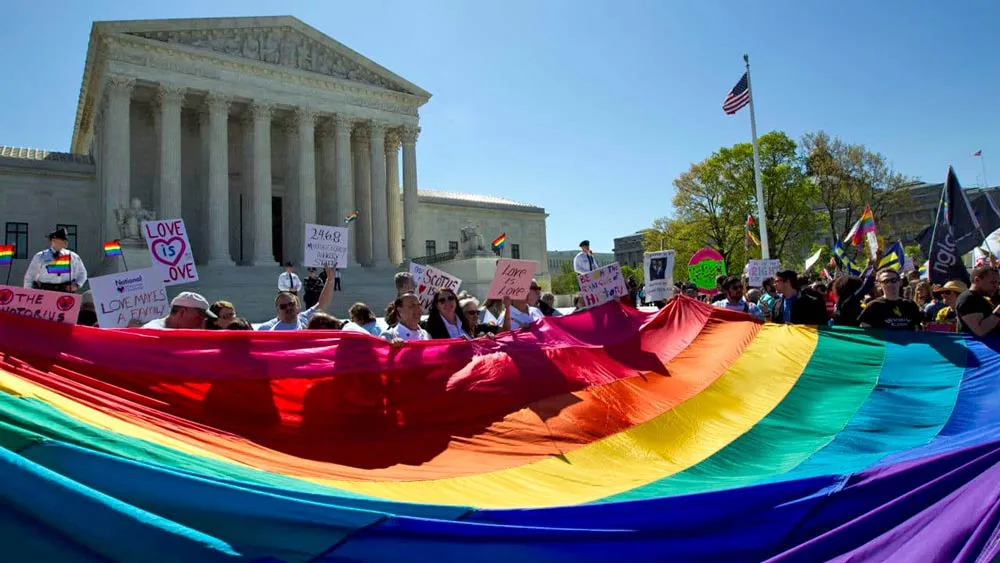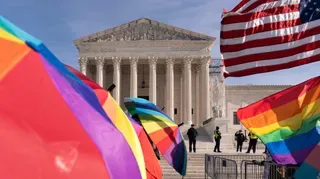October 16, 2013
This Rainbow A-OK, Not Gay, Says the Kremlin
Winnie McCroy READ TIME: 2 MIN.
Gays may have ruined the rainbow for the rest of the world, but officials at the Kremlin now say that Russia will have its rainbow flags and enjoy them, too. A top adviser declared that the rainbow flag flown by Russia's Jewish Autonomous Region, which looks very similar to the Pride Flag, does not violate the country's ban on LGBT propaganda.
"Regarding the similarity of this flag with the symbol of the gay movement, we explain that not every rainbow image is linked to sexual orientation," Georgy Vilinbakhov, a Kremlin advisor, reportedly wrote in an official response to an unnamed resident of the far eastern region who had raised concerns over the flag. Vilinbakhov goes on to note in the letter, shared by local website EAOMedia.ru, that Pride flags feature added "labels and images."
According to Buzzfeed , Vilinbakhov said that the flag of JAO, which is situated in the Russian Far East, bordering with Khabarovsk Krai and Amur Oblast of Russia and Heilongjiang province of China, was officially determined to not be a gay symbol, now illegal under Russia's anti-gay propaganda law. The JAO was created by Josef Stalin in the 1930s in a bid to isolate the Soviet Union's Jews.
"Obviously, the above described flag, the flag of the Jewish Autonomous Region, whose foundation is a white cloth, has nothing to do with that," Vilinbakhov wrote. "This flag does not contradict the current law of the Russian Federation and so there is no basis to cancel or change it."
In an interview with Alexander Valyaev, who in 1996 designed the rainbow flag for the Jewish Autonomous Region, the creator pointed out the many differences between the flags, among them the number of stripes and colors present.
"On its flag the gay movement uses seven stripes, not six," Valyaev explained. The rainbow and their flag have nothing in common, it's totally different. The rainbow is a divine symbol, taken from the Bible. God threw the rainbow from the sky into the wilderness of the desert as a symbol of hope. Gays used this divine symbol, the rainbow, but removed from its spectrum the light blue color, so it's already not a rainbow."
The outlet did not reveal who had questioned the legality of the region's flag. A poll taken in July by the Levada Center, an independent Russian pollster, found that 76 percent of those polled supported Russia's ban on propaganda of "non-traditional relations."
Winnie McCroy is the Women on the EDGE Editor, HIV/Health Editor, and Assistant Entertainment Editor for EDGE Media Network, handling all women's news, HIV health stories and theater reviews throughout the U.S. She has contributed to other publications, including The Village Voice, Gay City News, Chelsea Now and The Advocate, and lives in Brooklyn, New York.





